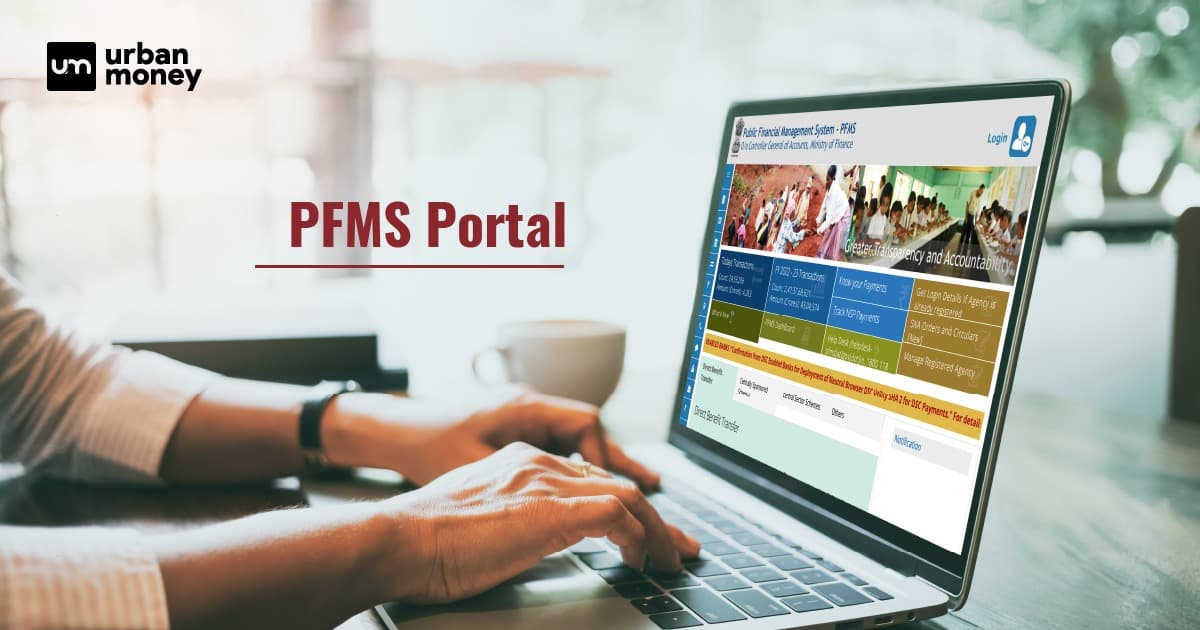PFMS Status

- Personalized solutions
- Expert guidance
- Application assistance
- Credit score discussion
- Interest rate comparison


Last Updated: 14 December 2025
PFMS (Public Financial Management System) is an online system developed by the Controller General of Accounts in India to monitor government expenditures and disbursements. It is integrated with Aadhaar, the Unique Identification Authority of India, to facilitate direct benefit transfers (DBT) to beneficiaries.
PFMS (Public Financial Management System) status in Aadhaar is a system used by the Government of India to track the flow of money, manage budget and expenditure and track payments. It allows the government to monitor and control government spending. Through PFMS, the government can track the progress of all government schemes and ensure that funds are being utilised for the intended purpose. PFMS also helps to ensure that the government can maintain a proper auditing system and detect any misuse of funds.
Highlights of the PFMS Payment Status Portal
The highlights of the PFMS payment status portal are as follows.
- Easy access to financial information: The PFMS portal provides access to various financial information such as budget allocations, expenditures, receipts, and balances.
- Monitoring of transactions: The portal helps to monitor various transactions done by the government. This helps to ensure that the funds are used correctly and promptly.
- Easy tracking of payments: The portal helps track payments made to various government departments and agencies. This helps ensure the payments are made on time and per the approved plans.
- Real-time tracking of funds: The portal helps to track the movement of funds in real-time. This helps to ensure that the funds are used for the intended purpose.
- Financial planning and control: The portal helps to plan and control the government’s financial activities. This helps to ensure that the funds are properly managed and utilised.
Benefits of Using the PFMS Portal
The PFMS Provides the following benefits to the citizens.
- Transparency: PFMS portal ensures transparency in the whole process of fund transfer to the beneficiaries. It helps to track the entire process from the transfer of funds from the government to the ultimate beneficiary.
- Easy Access: It is easy to access the PFMS portal. Any authorised user can easily access the portal and view the details of the transactions.
- Real-Time Monitoring: The portal offers real-time monitoring of the funds. It helps the government track the fund’s flow and ensure the funds are used appropriately.
- Security: It also ensures the security of the funds as it is an encrypted platform.
- Improved Efficiency: The PFMS portal helps improve the efficiency of the financial system by providing an effective platform for transferring funds.
- Reduced Paperwork: The portal reduces the paperwork associated with the transfer of funds. All transactions can be done electronically without any manual intervention.
The Process to Track NSP Payments
Select from the following process to track the NSP payments.
- Contact the payee: The first step in tracking an NSP payment is to contact the payee and inquire about the payment status. The payee can provide information about the payment status depending on the type.
- Check the NSP records: If the payee cannot provide any information about the payment, the next step is to check the NSP records. This can be done online or by calling the NSP customer service line. The records should provide information about when the payment was sent, when it was received and when it was processed.
- Contact the bank: If the NSP records do not provide any information about the payment, the next step is to contact the bank where the amount was sent or received. The bank should be able to provide information about when the payment was received and processed.
- Contact the NSP dispute resolution team: If all other methods of tracking the payment have failed, the next step is to contact the NSP dispute resolution team. This team can provide information about the payment status and, if necessary, can initiate a dispute resolution process.
How Can You Link the PFMS with Your Bank Account?
The steps to link the PFMS with a bank account are listed below.
- Download the NSP app from the Google Play Store or App Store.
- Create an account and provide your details.
- Link your bank account through the NSP app.
- Enter your bank details, including your name, account number, and bank routing number.
- Verify your bank account and confirm the details
- Once your bank account is linked, you can transfer money from your bank account to your NSP wallet.
How to Activate a PFMS Account?
Implement the following steps to activate the PFMS account.
- Go to the official website of the Public Financial Management System (PFMS).
- Click on the ‘Sign Up’ button.
- Enter your details like name, email address, mobile number, etc.
- Create a username and password.
- Click on the ‘Submit’ button.
- An OTP will be sent to your mobile number. Enter the OTP. 7. Your account will be activated.
How Long Will it Take for PFMS to Transfer Money?
It typically takes up to 3 working days for PFMS to transfer money. The minimum amount that can be transferred via PFMS is Rs. 1,000, and the maximum is Rs. 1 crore. And these funds are transferred into an account in the same branch.
Frequently Asked Questions (FAQs)
What is the PFMS mode of payment?
The Public Financial Management System (PFMS) is an online platform used by the Government of India to manage payments and receipts of Central and State Governments. It facilitates electronic fund transfers from one bank account to another, including government departments, ministries, and other financial institutions. The mode of payment is NEFT, RTGS, and IMPS.
Which bank is registered in PFMS?
The banks that are currently registered with the Public Financial Management System (PFMS) are the State Bank of India, Punjab National Bank, Bank of Baroda, Canara Bank, Bank of India, Central Bank of India, Union Bank of India, Indian Overseas Bank, UCO Bank, IDBI Bank and Corporation Bank.
How can I fix my PFMS payment?
If you have an issue with your PFMS payment, contact the PFMS helpline. You can also contact the PFMS office near you for help. They should be able to help you fix your payment issue.
What are the pending payee details in PFMS?
Pending payee details in PFMS refer to the information of the payee who has yet to receive government payment. This includes the payee’s name, the amount due, the date of payment, and any other information related to the transaction. In PFMS, payees can track their pending payments and take appropriate action to expedite the process.
How can I validate my PFMS bank account?
You can validate your PFMS bank account by contacting the PFMS help desk directly and providing them with the necessary details of your account. They can then validate your account and provide you with a confirmation.
How do I enable e-payment mode in PFMS?
To enable e-payment mode in PFMS, you must first register on the PFMS portal. Once your registration is complete, you can access the e-payment mode. To do so, log in to the PFMS portal with your registered credentials, click the ‘e-payment’ tab, and select the desired payment option.
How do I register with PFMS?
You can register with PFMS by visiting the official website of PFMS (Public Financial Management System) at https://pfms.nic.in/. On the home page, click on the ‘Register Here’ link.
